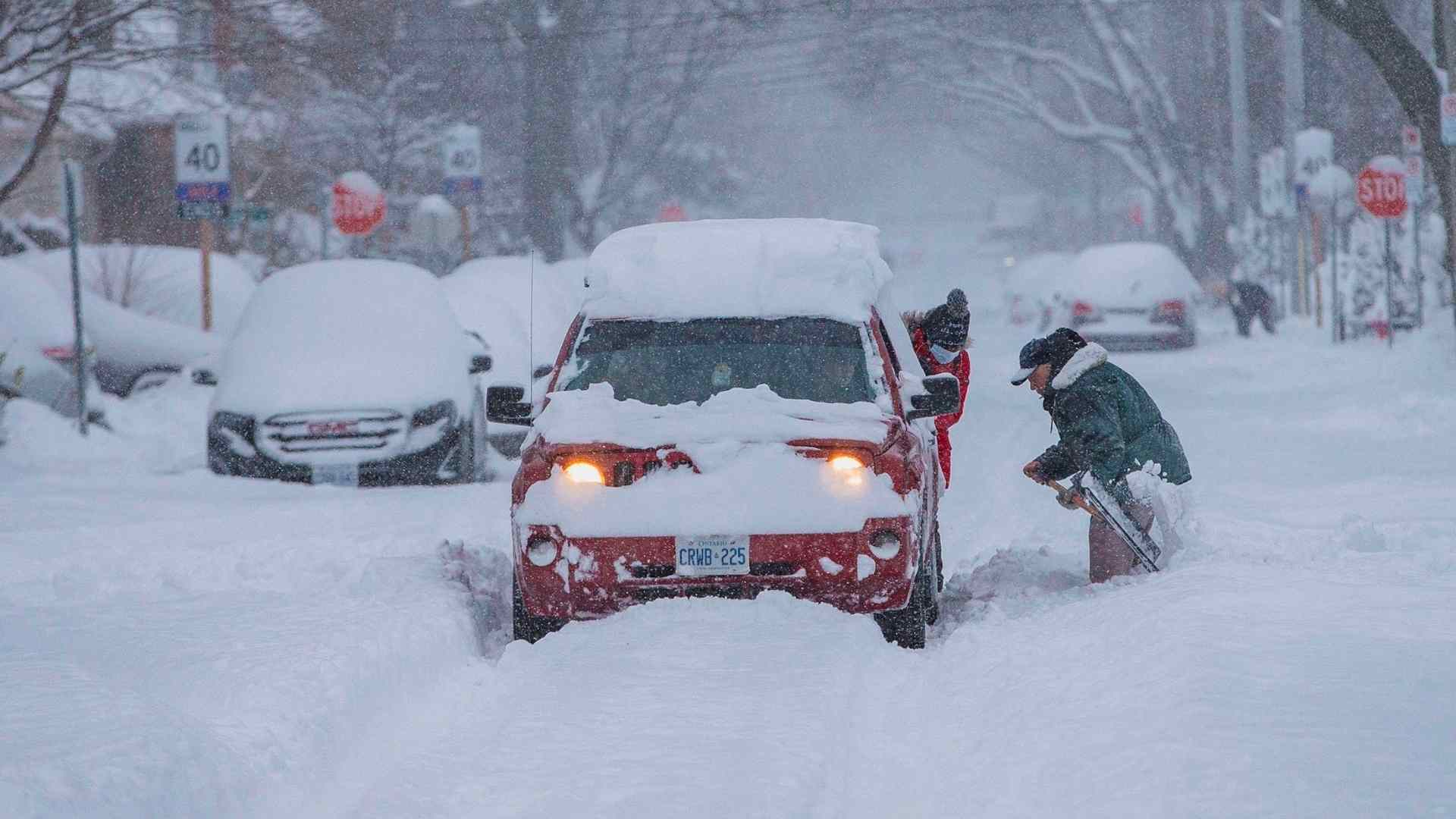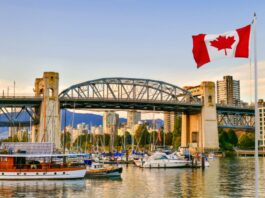Buried automobiles, power outages, whiteouts, slick roads, and high winds—snowstorms in Canada can be devastating. Here are the Worst Snowstorms that delivered us the harshest penalties of winter.
Snowstorms of the Ides of March, Saskatchewan and Manitoba, Canada March 15, 1941
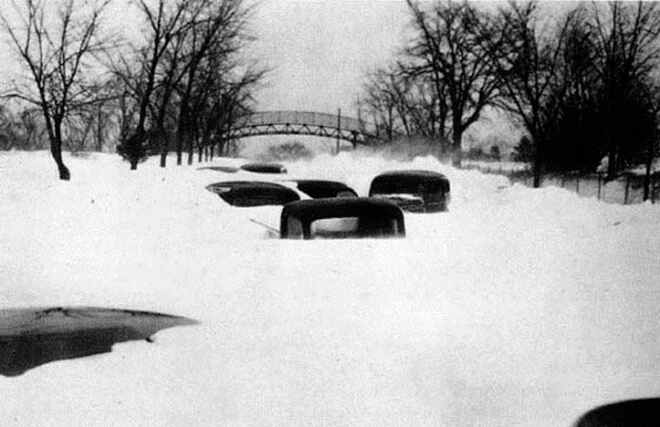
An unexpected blizzard slammed over sections of Saskatchewan, Manitoba, and the Upper Midwest states on Saturday, blasting up gusts of over 100 kilometers per hour and killing 76 people in only seven hours.
It was a “Alberta clipper,” a fast-moving cold front blowing down from the Rockies that delivered whiteout conditions and savage wind chills of up to -45 degrees Celsius out of nowhere. Many of the victims died of exposure after leaving their stalled cars on the road and attempting to walk to safety while dressed for spring. This catastrophe is claimed to be the major reason authorities advise you not to abandon your car if you are lost on the highway in a blizzard.
The Pollux-Truxtun Disaster, February 18, 1942, Newfoundland Canada
A hurricane-force snowstorm, a catastrophic shipwreck, a daring cliff rescue, a caring community, and a victory over prejudice… The narrative of Newfoundland’s worst blizzard is fit for a Hollywood epic. The US Navy destroyers Pollux, Truxtun, and Wilkes were on their way to a naval facility in Argentia, Newfoundland, when they became disoriented in a whiteout blizzard and collided with rocks on the shore. Over 200 sailors perished, and many of the survivors were carried up a 200-foot precipice on a swinging bosun’s chair pulled by peasants from nearby St. Lawrence.
Lanier Phillips, a 19-year-old Black deck hand from Georgia who was taken in by a local family and nursed back to health, was the wreck’s most renowned survivor. Phillips, who had grown up in the South with tremendous bigotry, was moved by their kindness and went on to become a major Civil Rights leader and oceanographer, returning to St. Lawrence to sponsor a scholarship and a children’s playground.
The Big Snowstorm of Toronto Canada 11th of December, 1944
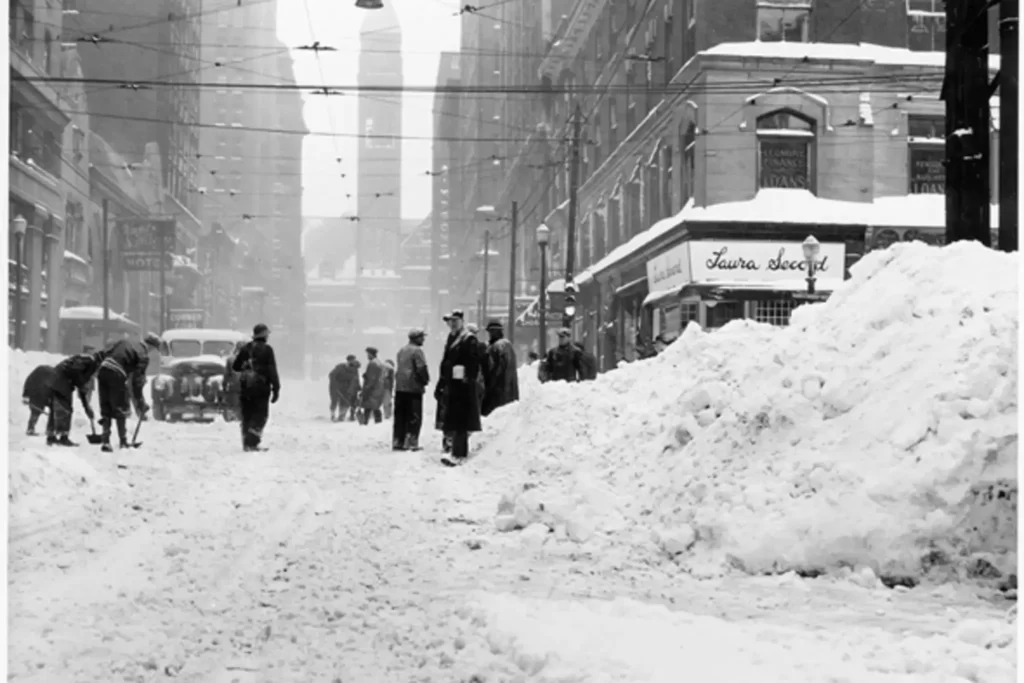
The prediction was for mild snow that day, but Toronto got more than it bargained for, with a record 57 centimetres falling throughout the city. Traffic was halted for days, preventing crucial deliveries of milk, food, and coal, while vital weapons factories supplying the war effort were forced to close.
A streetcar at Queen St. East and Mutual St. was toppled by strong winds, trapping 170 passengers inside and crushing one to death. In total, 21 persons were killed across Southern Ontario, with 13 of them dying from heart attacks induced by overexertion as they attempted to dig their way out of their homes. The city’s plows couldn’t keep up with the massive snow drifts, so the Mayor called on young volunteers to assist clear the streets. It took three days for Toronto residents to dig themselves out.
The Snowstorms of the Century, March 4, 1971, Quebec Canada
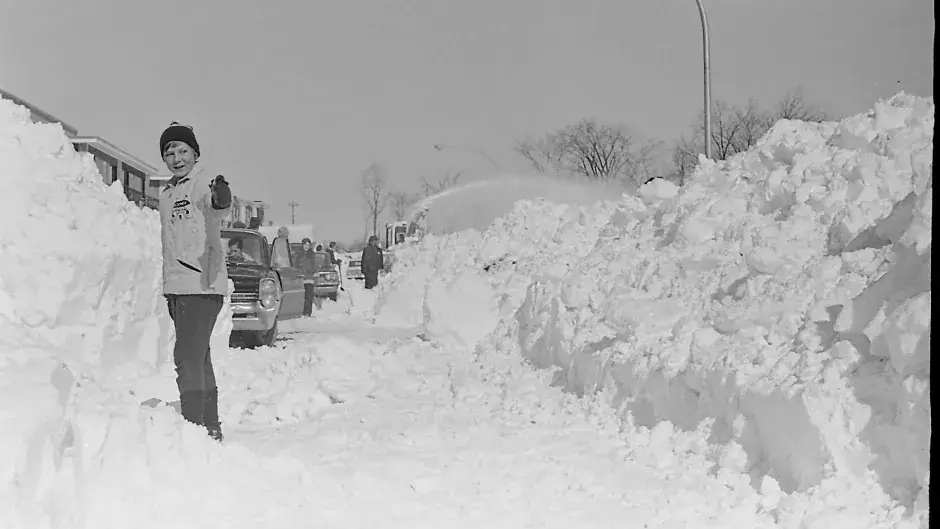
Even by Montreal standards, the winter of 1970-71 was epic. When the March 4 storm came, the city already had a half-metre of snow on the ground, and 47 centimetres would fall that day, with wind gusts of 110 kilometers per hour. Residents could only move around on foot or by snowshoes, skis, or the subterranean metro trains due to impassable roads. Two hundred Ski-Doo owners volunteered to offer emergency transportation, rescuing trapped motorists and transporting patients to hospitals.
Twelve Montrealers died in their cars from crashes, hypothermia, or suffocation, some buried so deep that only their antennas were visible. A total of 500,000 truckloads of snow were taken out of the city, only to be followed three days later by another lesser snowfall. That winter, the total snowfall was about four metres.
British Columbia’s Blizzard 29th of December, 1996
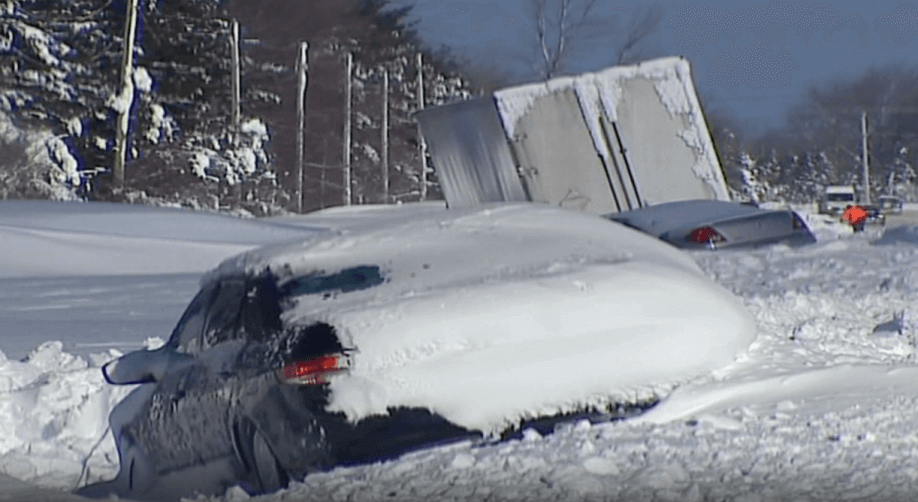
Snowfalls are uncommon in warm Victoria, but that doesn’t mean they don’t happen—and on that fateful Sunday, homeowners opened their doors to find a wall of snow. In a single day, 65 centimetres of rain fell across the southwest of British Columbia, causing the roof of the B.C. Stadium to buckle. The cumulative accumulation of 125 centimetres over five days paralyzed transit and emergency response systems. In the Fraser Valley, 250 motorists were trapped for up to 17 hours in drifts as high as three meters, and the military was called in to provide “the most substantial and intense life-saving operation carried out in British Columbia in many years,” according to provincial authorities.
As stranded travelers rushed in from the highways seeking food, shelter, and warmth, Glen and Cheryl Tolsma welcomed 89 unexpected guests at their farm east of Abbotsford. “You just help when something awful happens,” Cheryl told a local reporter. “Fortunately, we had enough of food and toilet paper.”
The Ice Storm affects Ontario, Quebec, and New Brunswick 4–9 January 1998
What Environment Canada called one of the most destructive and disruptive storms in Canadian history—and one of our all-time worst natural disasters—was actually five consecutive ice storms along a corridor from Kingston to Ottawa and Montreal, adding layer upon layer of freezing rain up to 100 millimetres thick. Over 1,000 steel hydro transmission towers buckled under the weight of the ice, knocking out electricity to 4 million homes for up to four weeks. More than 250 villages were declared disaster areas, displacing 100,000 people and necessitating Canada’s largest-ever peacetime deployment of military to clear roads and aid emergency responders.
Thirty-five individuals died as a result of the ice storm, many of them perished from carbon monoxide poisoning after using gas-powered generators or grills indoors. A subsequent investigation discovered that Quebec’s power grid and emergency management system were inadequately equipped, including Montreal’s water filtration plant, which narrowly avoided a public health disaster when it lost power for several hours. Public Safety Canada now recommends that each person keep at least 12 litres of drinking water on hand, enough for three days.
The Snowstorms of 1999, January 13-15, 1999, Ontario Canada
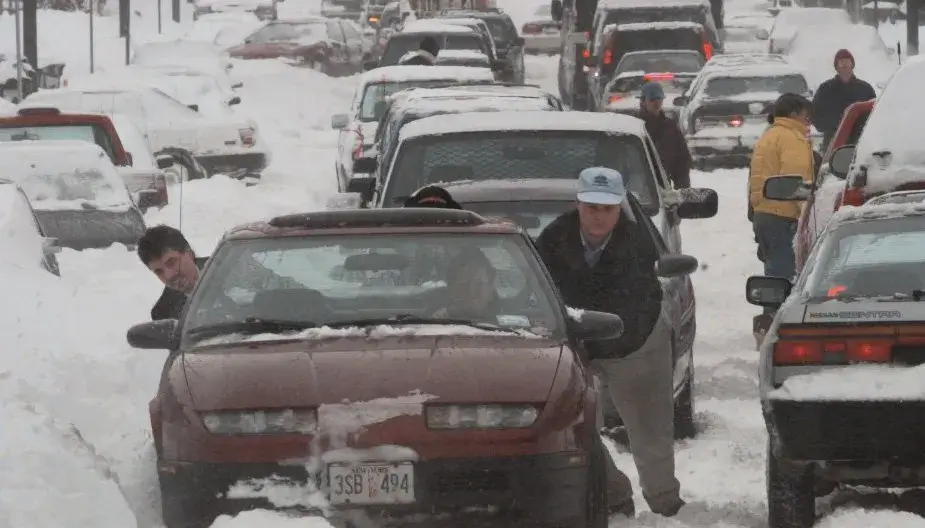
This snowstorm will be remembered for Toronto mayor Mel Lastman’s decision to send in the army to shovel the sidewalks. Indeed, the image of Lastman fist-pumping while riding atop an armored truck became an iconic moment in Toronto history, much to the delight of the rest of Canada. However, the reality was a genuine emergency affecting almost 7 million people in southern Ontario. Several storms in two weeks poured 119 centimetres of snow, breaking an 1846 record, and shutting down much of the city’s metro system, stopping schools, and canceling flights.
When another snowfall was anticipated, 400 troops from CFB Petawawa arrived in Bison armoured vehicles and began to work cleaning the streets and transporting the wounded and injured to hospitals. At a time when Toronto lacked suitable equipment, more than a hundred volunteers drove 20 hours from Prince Edward Island with snow plows. The next winter, St. John’s, Newfoundland, had more than 600 centimetres of snow and survived without the assistance of the army.
Ontario’s Snowmageddon 12-14 December 2010
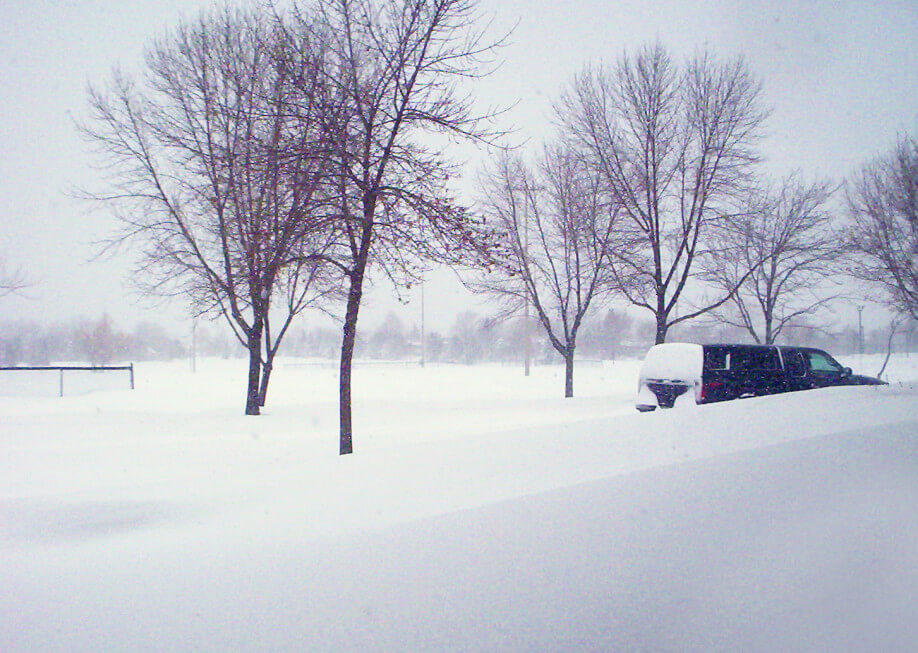
In December of 2010, a severe snow streamer with high winds delayed hundreds of cars on Highway 402 between Sarnia and London for two days. The “lake effect,” a climate phenomena that may produce small bands of severe snow, can reduce visibility to zero in seconds, causing biblical disaster along a 30-kilometer stretch of highway. Two hundred tractor-trailers and over a hundred cars became stranded in thick snow, leading Lambton County officials to proclaim a state of emergency and request military assistance.
Snowmobiles, rescue aircraft, and snowplows hauling buses rescued passengers from their buried cars, many of whom had gone 48 hours without food, medication, or warm clothing. Others took refuge along the roadway, where local residents welcomed those in need.
Ice Storm in December 2013, Southern Ontario, Quebec, and New Brunswick Canada
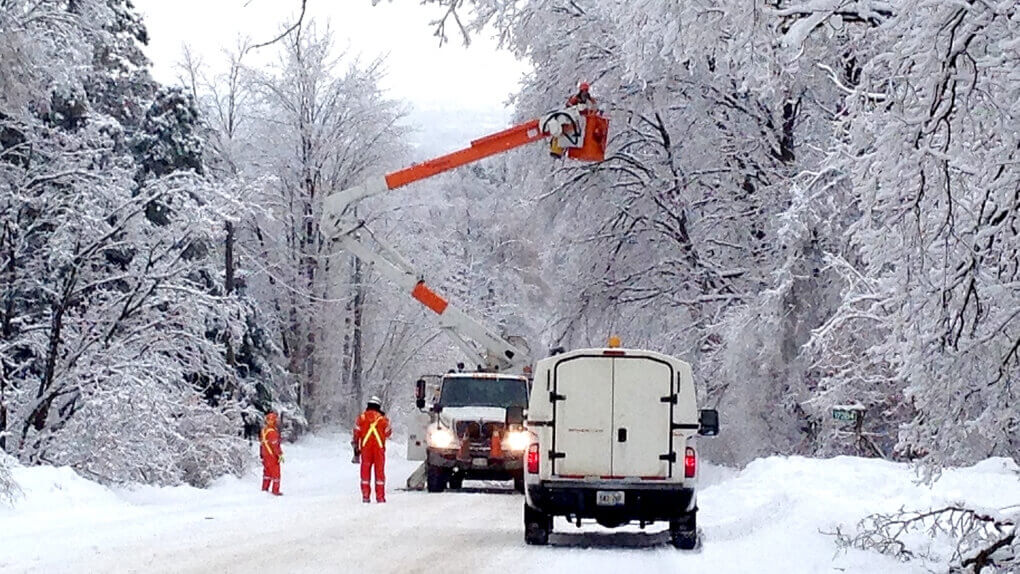
Many people remember the 2013-2014 winter as the year of the polar vortex, when Arctic winds disturbed weather patterns as far south as Texas. A storm complex inflicted all types of extreme weather throughout the continent a few days before Christmas, including a tornado outbreak and an ice storm to equal the 1998 storm. (Learn about the worst tornado in Canadian history here.)
Power lines were damaged by freezing rain, ice pellets, and snow in Southern Ontario, Quebec, and New Brunswick, generating disruptions that affected a million homes across eastern Canada, with many people spending Christmas Eve in the dark. Some residents in New Brunswick did not have electricity restored until January 3. Eleven persons were killed in car accidents or from carbon monoxide poisoning, and the total damages topped $200 million.
The 2018 April Snowstorms hit Southern Ontario, Quebec, and New Brunswick Canada

When Wiarton Willie, Ontario’s official weather forecaster, forecasted six more weeks of winter in 2018, he meant it—Ontario and Quebec were blasted with heavy snow, strong winds, and falling ice just as locals were preparing for T-shirt weather. Snowfall of up to 40 centimetres, along with freezing rain and ice pellets, resulted in 1,800 car accidents, including a 50-car pileup on Highway 400 in Barrie.
Large sheets of ice sliding off roofs posed a hazard to onlookers, shattering Parliament building windows in Ottawa and even penetrating the dome of Toronto’s Rogers Centre. As the storm moved east, the Saint John River overflowed from fast-melting snow, causing the worst floods in New Brunswick’s history.
Canada travel tips – These 10 tips could save your life in Canada
